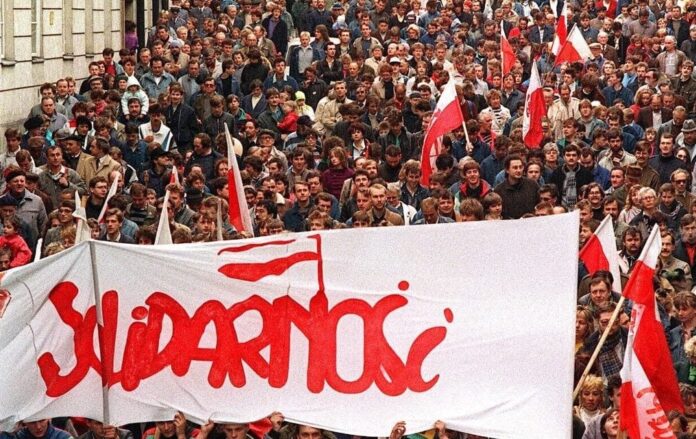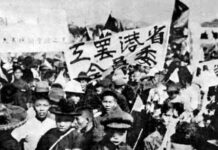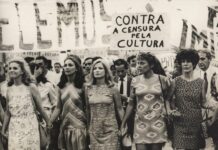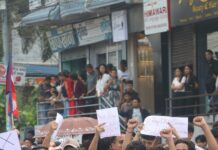In August 1980, Poland’s Stalinist regime was rocked by a massive strike wave which swept across the country
Paul Newberry, Socialist Alternative (ISA in Poland)
Arguably, Poland came closest to a successful workers’ revolt against Stalinism in central and eastern Europe. Before 1980, workers’ militancy had developed a well-organised, illegal trade union movement. Then, in that year, Solidarity burst onto the scene in a tidal wave of occupations and strikes which threatened to sweep away the rotten regime. Yet nine years later, a pro-capitalist regime was in place with Solidarity members at its centre. Paul Newberry looks at how this was possible.
The slogans and organisational forms thrown up during this struggle showed that big sections of the workers were striving for ways to overthrow the Stalinist bureaucracy and establish genuine workers’ democracy. This was expressed by graffiti on the walls in Gdańsk: ‘Socialism yes! But without distortions!’ As a by-product of the struggle the independent trade union Solidarity (Solidarnosc) was born. However, just nine years later, Solidarity formed a government and started a series of fast-track market ‘reforms’ which restored capitalism. How could such a movement become an agent of capitalist restoration? Were the roots of Solidarity’s degeneration present from the very beginning?
To fully understand the process of revolution and counter-revolution in Poland and other former Eastern Bloc countries in the 1980s it is necessary to take into account the origins of these regimes. In Russia in 1917 there was a mass revolutionary overturn which only later experienced bureaucratic degeneration due to the country’s economic and cultural backwardness and its isolation after the failure of the world revolution. However, the Stalinist regimes in Central and Eastern Europe were not formed in this way. These countries were liberated at the end of World War II by the Red Army which then maintained a presence there. The local communist parties formed coalition governments with the shadow of the bourgeoisie. However, the repressive organs of the state were firmly in the hands of the Stalinists. Within a short time they set about liquidating the last remnants of capitalism and landlordism with the popular support of the masses. In some countries, especially Czechoslovakia, these measures were supported by mass demonstrations of hundreds of thousands of workers.
From the very beginning, these newly created regimes were deformed workers’ states — modelled on Stalin’s Soviet Union — grotesque distortions of socialism in which workers’ democracy was replaced with bureaucratic dictatorship. Despite the initial enthusiasm, the brutal repressive nature of these regimes soon repelled the workers. Within a short time, workers’ uprisings broke out in many of these countries, most notably in Hungary 1956, where the working class heroically attempted to carry out a political revolution.
Poland was no exception to this process. In Poznań 1956 a workers’ strike and demonstration against the regime was brutally repressed. In the aftermath, it decided on a new strategy to increase its base of support. The First Secretary was replaced by Wladyslaw Gomulka. Concessions were made to the peasants with the regime backing down from collectivisation of the land on a mass scale. Lower-level bureaucrats were given more privileges to tie them to the system. The church was also granted privileges in return for its support.

A turning point
At first, Poland and the other East European regimes experienced high growth thanks to the advantages of the planned economy. Poland’s GDP grew by an average of 7%. However, the parasitic role of the Stalinist bureaucracy, which led to mismanagement and waste, acted as a brake on the economy. From a relative fetter on growth, the bureaucracy became an absolute fetter. Planning turned into its opposite — chaos.
By the end of the 1960s, the economy was already experiencing problems and was struggling to continue subsidising food for the population. Then, in 1970, the announcement of meat price rises sparked workers’ demonstrations on the Baltic coast which turned into an uprising. Although concentrated mainly in Gdynia and Gdańsk, the protests also affected Szczecin, Elbląg, Warsaw, Wrocław and a number of other towns. Tanks were sent in and the uprising was drowned in blood with the death count probably over 100. The Stalinist bureaucracy was shaken and once again tried to combine repression with concessions. Gomulka was replaced by Edward Gierek, who took massive loans from the West. Much of this credit was badly invested and a large amount was also spent on increasing the consumption of the masses in an attempt to buy social peace.
There was a period of rapid growth and increases in living standards, but the breathing space did not last long. Soon the regime was having difficulty paying back the loans. In 1976, workers organised a strike in Radom, home of Poland’s arms industry. While concessions were given to the workers, the strike leaders were victimised. A group of oppositionists and intellectuals set up the Workers’ Defence Committee (KOR) to raise funds for the victimised workers, provide legal aid, and publicise their cause. In the following years, KOR helped organise illegal ‘free trade unions’ in a number of cities, including in the shipyards of Gdańsk.
A turning point came in the summer of 1980 when another series of rises in meat prices sparked a strike wave throughout the country. The regime planned to divide the workers by granting concessions to strikers in strategic industries. However, this policy only encouraged more sections to strike. In Lublin, where workers also attacked the privileges of the bureaucracy and called for freedom of speech, the protest turned into a general strike, including the blockade of the railway lines to Russia, halting Polish exports. The local newspaper attacked the strikers and warned of Russian intervention, but the next day print workers stopped the presses. The deputy prime minister was flown to Lublin for emergency negotiations and, as part of the concessions won, the newspaper was forced to print an apology.
Political demands
There was a qualitative change when a strike broke out in the Gdańsk shipyard in mid-August in defence of Anna Walentynowicz, a workers’ leader and member of KOR’s Coastal Worker group. An illegal free trade union had existed here for many years so the workers were well-prepared and experienced. The strikers’ demands were more advanced than anywhere else in the country, spilling into the political plane. They demanded the release of political prisoners, reinstatement of sacked workers, wage increases in line with the militia, and the erection of a monument to workers who had been killed in 1970.
The occupations spread quickly across the tri-city of Gdańsk-Sopot-Gdynia. Strike committees in Gdańsk linked up with each other. On the second day, the authorities cut off all phone lines to Gdańsk to try to contain the strike. Nevertheless, it spread to other cities. Negotiations with the shipyard workers seemed to reach an agreement until Gdańsk’s public transport workers complained that they would be left to continue their struggle alone if the shipyard workers ended their protest. The shipyard workers’ leaders did a quick u-turn and the strike was on again, this time in solidarity with the other workers.
That weekend, representatives of the city’s strike committees met and set up a new body, the Inter-Factory Strike Committee (MKS). This was organised in a similar way to soviets or workers’ councils: made up of democratically elected workplace delegates who, in turn, elected a presidium. At first, this was an extremely democratic structure. The presidium was answerable to the MKS, whose members were accountable to the workplaces they represented. Talks between the MKS presidium and the regime were broadcast live to the Gdańsk MKS and all the shipyard workers. Even at this stage, however, some of the discussions between the regime’s experts and MKS ‘experts’ took place behind closed doors.
The same weekend, a list of 21 demands was drawn up. These were above all political and showed that the workers were moving in the direction of political revolution. They began with the demand for the acceptance of free trade unions and the right to strike, for freedom of speech and access to the media for people of all faiths, as well as for the strike movement and the MKS. These were all demands which Marxists would support. The democratic demands were followed by others against the privileges of the bureaucrats and secret police, against the special shops and commercial shops selling at higher prices. There was also a series of economic demands aimed at improving the conditions of working people and achieving greater social equality. Nowhere were there any calls for market reforms or the restoration of capitalism.
Marxists would add demands for the election of all officials with the right to instant recall, and that no official should receive more than the average wage of a skilled worker. In addition, positions should be regularly rotated. Such measures would help prevent the formation of a bureaucracy in the future. Above all, it was necessary to explain that the MKS should take power and become the organ for workers’ rule.
Immense working-class power
Despite attempts to isolate Gdańsk, word got out and the movement spread across Poland like wildfire. Occupation strikes and similar MKS bodies appeared all over the country. In Szczecin, shipyard workers were given a 10% wage rise before they had even taken action, which encouraged them to organise a strike and set up their own MKS. Within a week, 370 workplaces representing over 400,000 workers were affiliated to the Gdańsk MKS.
A situation of dual power existed. During the general strike, the Gdańsk MKS took control of food distribution, public transport and the health service. For the duration of the strike the sale of alcohol was banned, as was alcohol consumption by strikers. As the strike spread to more and more cities, the country slowly ground to a halt.
This strike confirmed the dominant role that the working class plays in revolutions. The whole of society was infected by the spirit of democracy. Open democratic debate and discussion flourished among students, artists, journalists, peasants, office workers, teachers and intellectuals. All sections of society were inspired and began setting up their own democratic organisations or transforming existing official clubs and associations.
In contrast, the regime was totally isolated, hanging on to power by a thread. It was unable to use force to break the strikes as it was unsure about the reliability of the armed forces. Even the ruling Polish United Workers Party (PUWP — the Communist Party in Poland) was infected, with its working-class base peeling away from the bureaucracy. A third of the Gdańsk MKS members were PUWP members, as were both MKS vice-presidents in Szczecin. In many other towns, working-class party members were in the leadership or took the initiative in setting up the local MKS. Later, over a million working-class PUWP members joined Solidarity!
The regime had to play for time and negotiate with the Gdańsk MKS. On 31 August, the regime signed the 21 demands — the Gdańsk agreement. The strike ended and the Independent Self-Governing Trade Union, ‘Solidarity’, was born. However, the Gdańsk agreement was only a partial victory. An historic opportunity to overthrow the regime and establish a healthy, democratic socialist society based on workers’ democracy had been missed. What was lacking was a revolutionary leadership capable of presenting to the workers an honest assessment of the tasks they faced to give full expression to the strikers’ demands.
Instead, the Gdańsk MKS and Solidarity leaderships — Lech Wałęsa, KOR intellectuals and Solidarity’s ‘advisors’ — had a much more limited perspective. They believed that the most they could win was a few reforms. Jacek Kuroń, one of KOR’s leaders, even revealed that before the Gdańsk agreement he believed the demand for free trade unions was a demand for the negotiating table but not one that could be won. At every point, the leadership played a conservative role, holding back the movement and blocking the more radical demands of the workers. For example, calls to end the ‘leading role’ of the PUWP and for free elections were opposed by the leadership and did not appear among the 21 demands. After signing the agreement, the leadership travelled up and down the country trying to persuade workers to call off strikes. The Catholic church played a similarly conservative role. It urged moderation and persuaded strikers to stop striking to avoid provoking Poland’s neighbours.
Despite the role of the leadership, Solidarity enjoyed phenomenal growth. Two weeks after signing the Gdańsk agreement, Solidarity had 3.5 million members. By the autumn, 8.5 million workers had joined. In a short time, membership reached ten million. Within months, it became the most powerful organisation in Poland. All over the country, strikes forced the resignation of hundreds of bureaucrats: party secretaries and factory managers.
The last chance
Then, in March 1981, Solidarity activists in Bydgoszcz were beaten up by security police when leaving a meeting. This provoked a national outcry and Solidarity organised a four-hour warning strike which was supposed to lead to a general strike on 31 March. Wałęsa and the church, including cardinal Wyszyński and pope John Paul II, urged Solidarity not to organise the strike. At the last moment, the regime agreed to Solidarity’s demands to punish those responsible for the beatings and recognise Rural Solidarity. This gave Wałęsa the pretext to call off the general strike.
An opportunity to raise the movement to a higher level and challenge the very existence of the regime was lost. Instead, Solidarity entered a period of crisis as its internal contradictions sharpened. The bureaucracy was given a breathing space which it made full use of. It began to sabotage the economy, hoping to demoralise the working class and place the blame on the shoulders of Solidarity. Many products were rationed and massive queues appeared for basic necessities such as meat, sugar, soap and even toilet paper.
The regime’s tactic began to work. Demoralisation and frustration at the ineffectiveness of Solidarity’s leadership set in. According to Kuroń, in the first half of 1981, support for Solidarity fell from 60% to 40%.
In September 1981, Solidarity held its first and last congress. There was opposition to the leadership and widespread support for the idea of workers’ self-management. This represented workers’ instinctive striving towards a political revolution and the tasks of taking over and running society and the economy themselves. Unfortunately, such ideas were not worked out into a clear programme. Opposition within the union was not organised or united. Above all, it lacked a perspective of the tasks facing the movement. Although a resolution in favour of workers’ self-management was passed by the congress, Wałęsa and the leadership were re-elected. The policies of compromise and ‘self-limitation’ (‘don’t provoke intervention’) continued.
The September congress was the last chance for Solidarity to change course and rearm the movement. With this missed opportunity, the balance of forces changed in favour of the regime. Conditions were ripening for a clampdown. On 13 December 1981, the military wing of the bureaucracy made its move. General Wojciech Jaruzelski organised a military coup and imposed martial law. The Solidarity leadership was rounded up and arrested along with thousands of activists. Even Gierek was interned. Meetings were banned and a curfew was introduced.
Martial law was a watershed for the development of Solidarity and the political revolution. The union’s democratic organisations were smashed. Any leaders who managed to escape arrest were forced underground. No democratic debate or control of workers’ representatives could exist in such a situation. Working in clandestine conditions, the leaders were now free from the pressure of the working class.
Embracing capitalism
At the same time, the economic crisis deepened. It was a time of great hardship for the mass of the population with shortages of basic necessities, growing queues and rampant inflation. Despite the existence of mass unemployment in many western countries and periodic recessions, it seemed to Polish workers that capitalist countries offered a beacon of hope. Illusions in the market and capitalism were strengthened. Even the bureaucracy was affected. Having lost faith in the planned economy, it unsuccessfully attempted to get the economy out of the impasse by implementing market ‘reforms’.
By 1988, both the Solidarity leadership and the bureaucracy had more or less the same pro-capitalist outlook, with Solidarity now completely dominated by intellectuals and Catholic advisors, and with Wałęsa having moved much further to a right-wing, pro-market position. They believed the solution lay in far-reaching market ‘reforms’ which would lead, ultimately, to the restoration of capitalism. These measures would have to involve severe austerity, but the regime lacked the legitimacy to carry these out. At the same time, there was a revival in Solidarity and the number of strikes was on the increase. Therefore, the bureaucracy needed to involve Solidarity in the process. If Solidarity could be persuaded to commit itself to the measures and take joint responsibility, opposition to such tough policies could be minimised.
The solution was to organise ‘round table’ talks to negotiate the terms of such a deal. Unlike in August 1980, however, this time the real discussions took place behind closed doors without the control of the workers. The televised parts of the discussions were purely for show. In return, Wałęsa and other leaders extinguished the strikes which were beginning to mushroom across the country. The talks resulted in agreement to organise partially free parliamentary elections. Only 35% of the seats in the Sejm (parliament) were elected, the rest being reserved for candidates of the PUWP and its allies.
The 5 June 1989 elections were a total victory for Solidarity. Opposition candidates won all bar one of the seats which were contested, showing the isolation and loss of legitimacy of the regime. A few months later, Solidarity formed a coalition government and set off down the road of capitalist restoration, which caused a dramatic fall in GDP over the next two years and mass unemployment of over 20%.
However, this defeat for the working class was not inevitable. On the one hand, the seeds of counter-revolution were present in Solidarity from the beginning, embodied in the mistakes and betrayals of its conservative reformist leadership. On the other hand, Solidarity also contained the seeds of political revolution in the organisational form of the MKS and the political demands of the rank and file. It was only after martial law, the crushing of the workers’ democratic organisations and the total collapse of the economy that the fertile soil existed for counter-revolutionary seeds to grow. Had a strong Marxist opposition existed within Solidarity in 1980 to combat the mistaken strategy of the leadership and present a clear alternative, the workers’ movement could have overthrown the Stalinist bureaucracy, established a healthy democratic socialist society, and changed the course of history.




